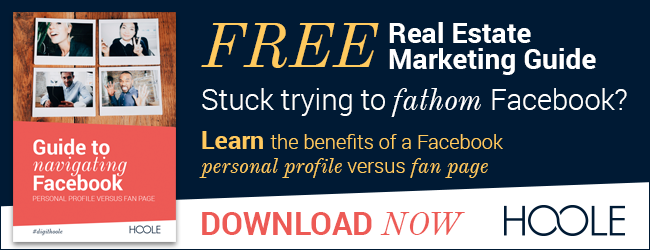Custom shortened URLs are a great way to extend your real estate branding, personalise your shortened links, and track clicks. If you’re not already using this marketing technique, it’s time to find out what all the fuss is about.
Shortened URLs have been around for a long time now and you’re most likely using them every day, even if you don’t notice it. Short URLs are all over the web – on social media, on brand websites, in videos, and in emails.
They’re especially useful for real estate marketing purposes, as well as for aesthetic reasons to make your links look short and sweet rather than unsightly and overly long.
A short history of URL shorteners
TinyURL was the first company to “invent” shortened URLs, back in 2002 (to keep things in perspective, this was before WordPress, Facebook, Gmail, and YouTube existed).
The developer of TinyURL created the service to meet his own needs, as he wanted to convert posts on newsgroups to web pages without the long URLs clogging up his database.
TinyURL proved to be hugely popular and spawned a boom of copycat services, but what really made them take off in a big way was the launch of Twitter in 2006.
Twitter was the first social network to limit updates to 140 characters (which has just recently been boosted to 280 characters for certain users). This limit was based on the character limit in text messages sent physically with a phone – if you’re an early adopter of Twitter you’ll know the original service was designed to send tweets to your phone as an SMS message.
This limit forced users to be concise but it proved problematic when it came to pasting in a long URL. This is where URL shortening services started to come in really handy and Twitter actually started using TinyURL to shorten URLs automatically.
While there were several other URL shorteners around at the time, TinyURL was the most popular until the launch of Bitly in 2008. Bitly introduced new functionality for users to access analytics on their links and quickly gained a reputation as the best URL shortener. Twitter didn’t take long to switch to the new service. The Bitly URL shortener was also the first to introduce branded domains in 2010, along with an enterprise dashboard for pro users.
The different URL shortening services continued to evolve and develop new functionality to compete against each other. URL shortening quickly became an essential tool for marketers for personalisation, tracking, and improved user experience.
Benefits of using a short domain name
As you can start to see from understanding the evolution of URL shorteners, these days they’re a lot more than simply a tool for reducing the length of your real estate website links.
Shortened URLS have many benefits for real estate marketers and as technology is improving all the time we can look forward to enhanced functionality in the future.
For now, these are the main reasons to use a short URL:
Long URLs are unwieldy and ugly, especially if they contain lot of random characters for tracking code. A short URL just looks better.
1 – They are short!
They don’t take up as much space in your social media posts. Many social media networks impose character limits and you don’t want to use up your quota with a long URL.
2 – You can brand them
I love this fact – why not extend your branding across all your touchpoints, even your shorter URLs! With 20 years of digital experience under my belt it was easy for me to set up one for my brand, which is go.hoole.co, plus others for my real estate clients, such as visit.thehillsreal.estate, but if you find it a bit perplexing get in touch and we’ll help you.
3 – They’re an excellent tracking tool
They have the added benefit of being a reporting mechanism, so you can see which pieces of content received the most clicks and referrals, and you gain more insight into what type of content your followers enjoy engaging with most (and can create more content like that!)
4 – You can gain industry-wide intel such as the best time to post
If you upgrade your link tracking account you can often access benchmarking data and audience insights, such as the device type where content is consumed, ideal publishing times and performance benchmarks of real estate industry peers.

Why Choose a Branded Short URL Over a Generic One?
URL shorteners have received some criticism in the last year or two due to security concerns. As the generic shortened URLs use only a few random characters, it’s possible for hackers to scam them by brute force, just as they might crack your password easily if it’s short. This means that web pages could become accessible by people you didn’t intend to view them. However, if you only use them for information that you’re happy to share publicly, there’s no major issue.
One way to counteract these security issues is to use a custom domain name for your URL shortener, also known as a vanity URL. Vanity URL’s also has the advantage of appearing more trustworthy to the user who clicks on them, so they won’t be worried they’re spam (spammers commonly use shortening services to hide the fact that their links are really going to www.myspammywebsite.com/scam or whatever, so that more people will click them).
After you buy a branded short domain, most social media scheduling tools allow you to use your own branded URL by connecting it to one of the custom URL shorteners that support them.
Twitter has its own URL shortening tool at t.co, but this will be swapped out if you use your own branded vanity URL.
LinkedIn, on the other hand, will still always swap your branded URL to their own shortened URL.
As well as on social media, you can use branded short links:
- In email, to make long links look nicer and track if and when a client clicked on your information, which indicates it’s time to follow up with a phone call!
- On video links where unbranded links would be hard to say and remember.
- In print materials to monitor the success of print marketing campaigns and keep track of special offers (such as a free property valuation, free building report and so forth).
You can even change the randomly generated letters and numbers at the end of your branded short URLs such as “/specialoffer” or “/freevaluation” or “/freebuildingreport” to make them easier for your real estate clientele to remember and type in manually.
Popular and FREE URL Shortening Services
Google uses goo.gl
Of course, Google has one! This is also used as the YouTube URL shortener.
WordPress uses wp.me
If your website or blog is built with WordPress.com you’re covered. For self-hosted WordPress blogs, install the Jetpack plugin to access this feature.
Buffer uses buff.ly
The buff.ly url shortener is part of the Buffer social media management tool.
Hootsuite uses Ow.ly
Part of the Hootsuite social media management tool.
Bitly uses bit.ly or j.mp
These are the most well known and most commonly integrated with other applications.
Brandly uses brand.ly
I use this when I need to create slightly longer length URLs than Bit.ly allows.
Is Branded Link shortening for you?
URL shortening has become a major part of the way we use the web, but the technology is still really only in its infancy. Links are more important to real estate marketing than ever before for sharing and promoting content, and a branded short domain name can help you to do this more effectively.
If you need any help setting up your short branded links, get in touch with us at Hoole.co and we’ll be happy to help. And if you have any other questions or tips on using URL shorteners, please add them in the comments!


Join the Conversation - add your thoughts